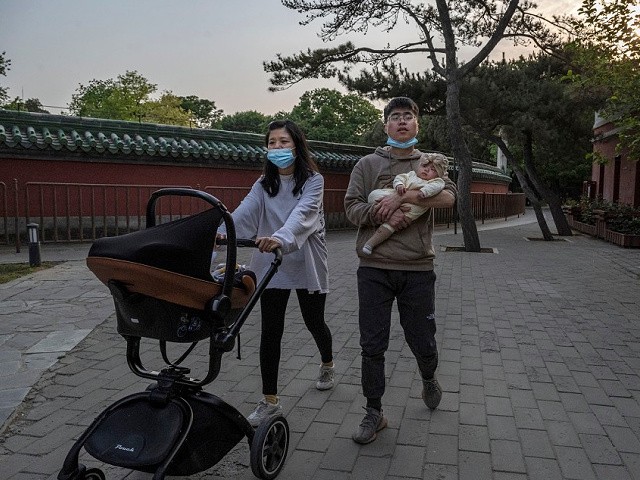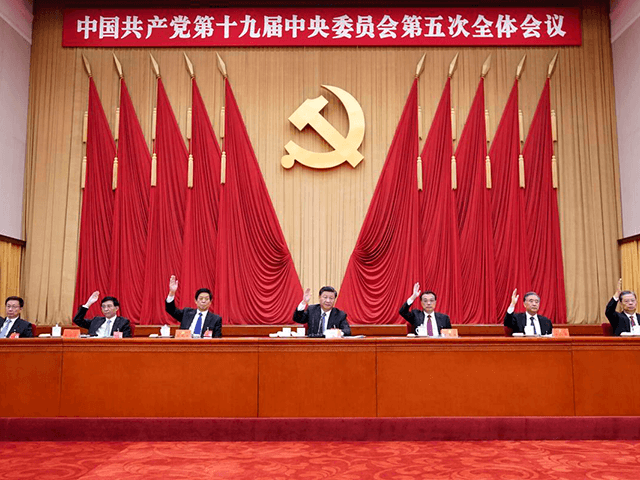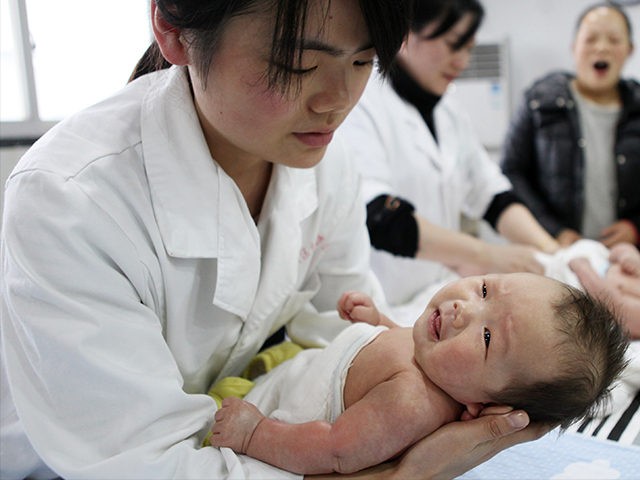China’s government on Monday vowed to “reduce non-medical abortion” in the country by 2035 as the world’s most populous nation continues efforts to boost its birth rate, which has declined in recent years.
China’s State Council, or chief administrative authority, announced a number of new objectives on September 27 aiming to promote the “development of Chinese women and children” over the next decade, including several relating to women’s reproductive health.
The State Council said it would work “to promote healthy pregnancy and reduce unintended pregnancies” through the popularization of knowledge concerning “reproductive health and eugenics and post-natal care.”
China’s State Council promised to “carry out scientific and practical health education in various forms at different stages of school education to promote students to master the knowledge of reproductive health and improve their self-protection ability.”

A couple carries their newborn baby as they walk at a local park on May 12, 2021, in Beijing, China. According to data released by the government from a national census, China’s population grew 0.53 percent over the last 10 years down from 0.57 percent a decade ago bringing the population to 1.41 billion. (Photo by Kevin Frayer/Getty Images)
The education initiative will support an “enhance[d] awareness of sexual ethics, sexual health, and safety of both men and women, and advocate shared responsibility for contraception,” according to the outline.
The administrative body further vowed to “integrate reproductive health services into the whole process of women’s health management to ensure that women have the right to make choices about contraception and birth.”
A 2018 report by China’s National Health Commission estimated that about nine million abortions were performed in China annually.
“[M]ost women who came to terminate their pregnancies were often young and single, with some having undergone repeated abortions,” China’s Sixth Tone news site recalled on Monday, citing the 2018 report.
China banned sex-selective abortions in 2001. The action came after an increasing number of Chinese women terminated pregnancies upon learning they were pregnant with a girl. A cultural preference for sons compounded by a state-mandated limit on the number of children each couple was allowed to have at the time — no more than one — led to the spike in sex-selective abortions across China pre-2001. The Chinese Communist Party increased the number of children couples were allowed to have to two in 2016 after realizing its strict one-child policy — implemented in 1979 to curb China’s then-exploding population — had warped national demographics and contributed to a declining birth rate.
China announced on May 31 it would allow each married couple in the country to have up to three children. The edict followed shortly after a once-in-a-decade census showed China’s population “grew at its slowest rate during the last decade since the 1950s, to 1.41 billion,” Reuters reported at the time. The census statistics fueled concerns that China could “grow old before it gets wealthy as well as criticism that it had waited too long to address declining births.”

In this photo released by Xinhua News Agency, Chinese President Xi Jinping, also general secretary of the Communist Party of China (CPC) Central Committee, leads other Chinese leaders attending the fifth plenary session of the 19th Central Committee of the Communist Party of China (CPC) in Beijing, China on Oct. 29, 2020. (Wang Ye/Xinhua via AP)
China’s State Council addressed persisting cultural preferences for male offspring among Chinese parents in its September 27 notice. The administrative body said it would “carry out extensive publicity on the birth policy” in China by promoting “changes in customs” and guiding “changes in male preference” to “build a new culture of marriage and childbirth.”
The State Council further vowed to “improve the laws, regulations, and policies related to population fertility, and promote the linkage of fertility policies with economic and social policies.”

COMMENTS
Please let us know if you're having issues with commenting.